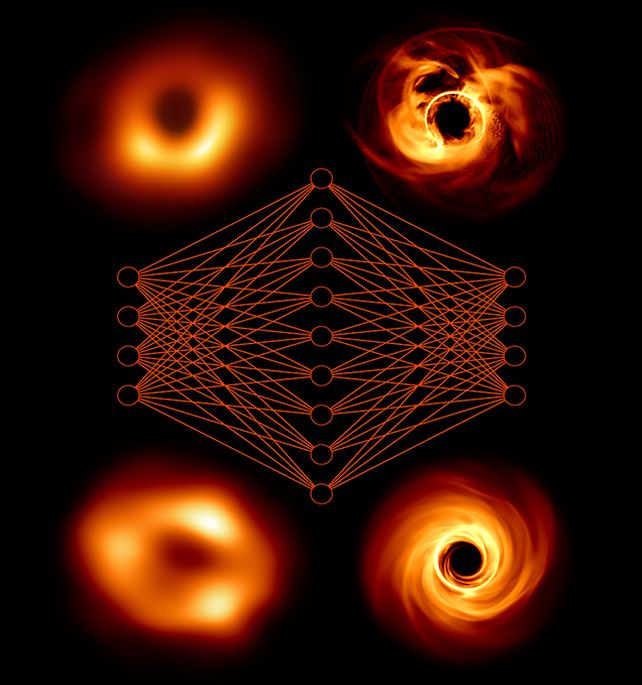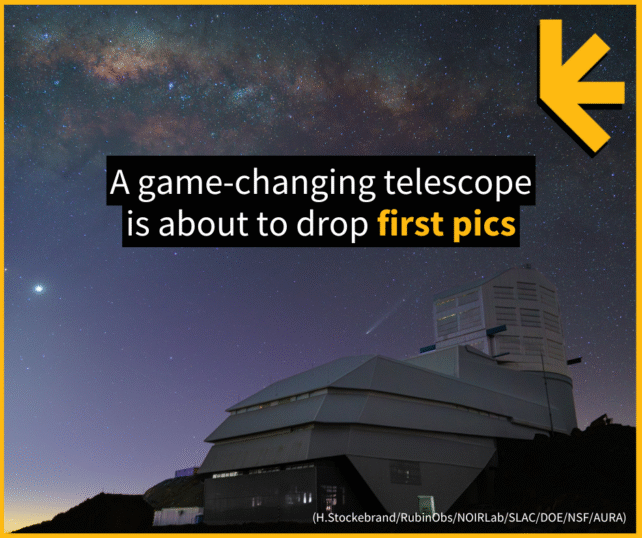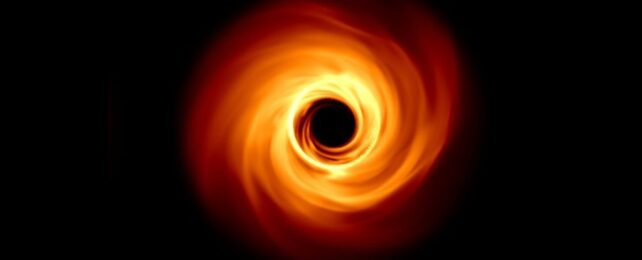The colossal black hole lurking at the center of the Milky Way galaxy is spinning almost as fast as its maximum rotation rate.
That's just one thing astrophysicists have discovered after developing and applying a new method to tease apart the secrets still hidden in supermassive black hole observations collected by the Event Horizon Telescope (EHT).
The unprecedented global collaboration spent years working to give us the first direct images of the shadows of black holes, first with M87* in a galaxy 55 million light-years away, then with Sgr A*, the supermassive black hole at the heart of our own galaxy.
These images are incredible – but also difficult to interpret. So, to figure out what we're looking at, scientists turn to simulations. They build a bunch of virtual characteristics, and figure out which of them most resemble the observational data. This technique has been used a lot with the EHT images, but now it's been kicked up a notch.

A team led by astronomer Michael Janssen of Radboud University in the Netherlands and the Max Planck Institute for Radio Astronomy in Germany used high-throughput computing to develop millions of simulated black holes.
Then, they used that data to train a neural network to extract as much information as possible from the data, and identify the properties of the black holes.
Their results show, among other things, that Sgr A* is not only spinning at close to its maximum speed, but that its rotational axis is pointed in Earth's direction, and that the glow around it is generated by hot electrons.

Perhaps the most interesting thing is that the magnetic field in the material around Sgr A* doesn't appear to be behaving in a way that's predicted by theory.
M87*, they discovered, is also rotating rapidly, although not as fast as Sgr A*. However, it is rotating in the opposite direction to the material swirling in a disk around it – possibly because of a past merger with another supermassive black hole.
"That we are defying the prevailing theory is of course exciting," Janssen says.
"However, I see our AI and machine learning approach primarily as a first step. Next, we will improve and extend the associated models and simulations. And when the Africa Millimetre Telescope, which is under construction, joins in with data collection, we will get even better information to validate the general theory of relativity for supermassive compact objects with a high precision."
The team has detailed their methodology and findings in three papers published in Astronomy & Astrophysics. They can be found here, here, and here.
